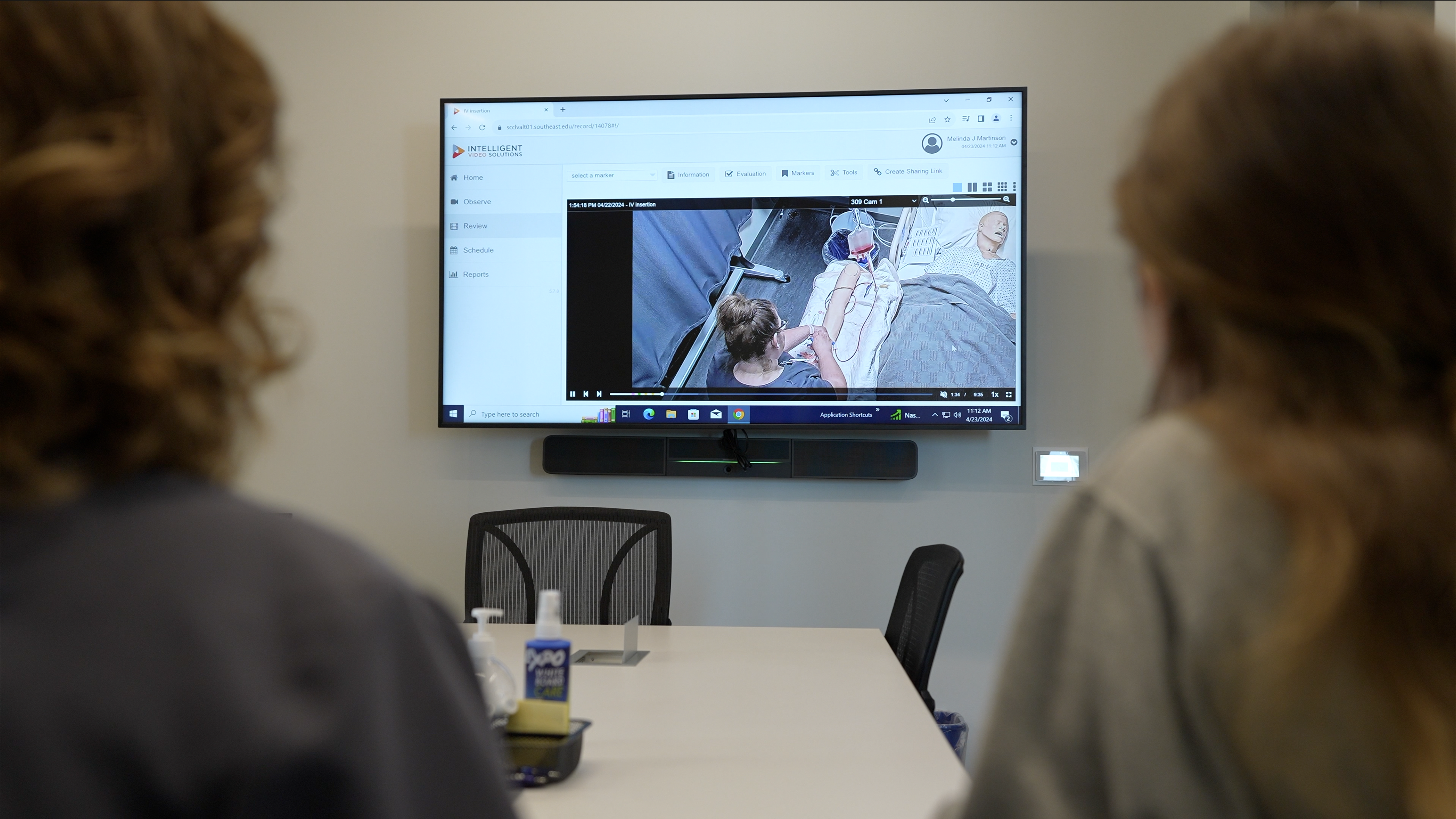Integrating audio and video recording systems on college and university campuses offers significant educational benefits, however, the implementation of advanced technologies is not without its hurdles.
This introduction sets the stage for exploring practical tips to help educational institutions overcome the common challenges associated with deploying A/V capture systems campus-wide.
Common Implementation Challenges Impacting Higher Education Institutions
As we look to the future of higher education, it's clear that audio and video observation and recording systems will play an increasingly important role in shaping how we teach, learn, and assess student performance. But the integration of audio/visual capture and recording systems does come with some challenges.
Let’s walk through several examples to see how best to navigate these obstacles.
Stakeholder Engagement
It’s crucial to involve key stakeholders early in the process of implementing audio/video capture systems in higher education. This proactive engagement ensures that the system meets the diverse needs across different academic departments, mitigating resistance and increasing the system's effectiveness and adoption. Consider involving faculty, IT staff, administrative leaders, and even students to gather various perspectives and requirements.
"When stakeholders contribute from the outset, their firsthand insights help tailor solutions that truly enhance administrative and implementation efficiency."- Kevin Marti, IVS President
How to Get Started: Begin with informational sessions to discuss any potential benefits and implications of A/V recording system integration. Establish a task force that includes representatives from all key stakeholder groups to provide continuous feedback throughout the project. Regular updates and transparent communication are vital to keep everyone aligned and engaged.
Technical Compatibility
Ensuring any new A/V capture system works seamlessly with existing technological infrastructure like, Learning Management Systems (LMS) and campus networks, is vital. Compatibility issues can lead to significant disruptions in both the deployment phase and actual usage, potentially impacting the educational process.
"The key to successful system integration lies in thorough pre-deployment testing," advises Dustin Stern, IVS Chief Technical Officer "You need to simulate real-world scenarios to ensure all systems communicate effectively."
How to Get Started: Conduct a comprehensive audit of current technology platforms used on campus. Work closely with your A/V system vendor to understand their technology's specifications and integration capabilities. This approach helps identify and address any potential issues early in the process, ensuring a smooth transition post-implementation.
See how Southeast Community College is using A/V capture software for practical learning and accurate feedback for students in health sciences.
Comprehensive Training
Effective training is crucial for the successful implementation of any new A/V technology in higher education settings. Ensuring the faculty, staff, and students are proficient in using the system maximizes its potential benefits and enhances the overall educational experience.
"Training isn't just about showing how the system works; it's about integrating it into the everyday educational processes. Well-designed training programs ensure effective use." - Kevin Marti, IVS President
How to Get Started: Provide thorough training for faculty, staff, and students on how to use the A/V system effectively. This may include workshops, online tutorials, and ongoing support to ensure users are comfortable with the technology and can leverage its full potential.
Phased Implementation
A phased approach to implementing A/V systems allows for initial assessment and refinement, making the full-scale rollout smoother and more efficient.
"Starting with a pilot program in one department enables identification of any hiccups early, making sure the system meets the institution's needs."- Justin Sherman, IVS Chief Marketing Officer
How to Get Started: Take a phased approach to implementation, starting with pilot programs in a few departments before rolling out campus-wide. By using these initial deployments to gather feedback, you are able to adjust training and refine technical support to meet the institution's requirements. This method helps ensure the system is fully functional and effective before expanding to the entire campus.
See how the University of Alberta Faculty of Pharmacy and Pharmaceutical Sciences is using A/V capture to create real-world clinical scenarios to help students prepare for the exam at the completion of their degree.
Scalability
Scalability is essential for A/V recording systems in higher education to handle growth in student numbers and program expansions effectively and without significant reinvestments.
"Scalable systems are necessary to adapt to changing educational demands without constant major investments," highlights Justin Sherman, IVS Chief Marketing Officer. "These systems allow institutions to expand their capabilities as they grow."
How to Get Started: Choose A/V recording solutions from vendor partners who offer modular additions and flexible configurations. Evaluate potential systems for their ability to scale up in response to increased demand. Plan for future needs from the start, ensuring the system you implement today will serve you well into the future, accommodating growth without the need for significant reinvestment.
Clear Policies and Procedures
Developing clear guidelines for the use of A/V systems will ensure ethical usage and protect participant privacy. These policies should address things like consent, data storage, and appropriate use of recorded content.
"Creating robust policies for video observation technologies is fundamental to maintaining trust and integrity within educational environments." - Kevin Marti, IVS President
How to Get Started: Establish comprehensive guidelines that include how and when to obtain consent, define data storage limits and security measures, and outline permissible uses of the content. Regular training sessions should be held to familiarize all users with these guidelines to protect the privacy of all participants and ensure ethical use of the technology.
Ongoing Assessment and Improvement
Continuous assessment and improvement are vital for maximizing the impact of A/V systems in educational settings. By integrating assessment and feedback into the regular use of your software system, you will enhance outcomes and ensure that A/V systems are used effectively.
"Regular feedback and outcome assessments ensure the technology continues to meet evolving educational needs and institutional goals." - Justin Sherman, IVS Chief Marketing Officer
How to Get Started: Implement a structured feedback mechanism to gather regular input from all users.
Analyze things like:
- How the A/V system affects learning outcomes
- How the system aligns with institutional objectives
- Ease of implementation and training
- Ease of use
Use this data to make informed decisions about upgrades, training needs, and system adjustments to enhance overall effectiveness.
See how one university found a mobile solution to record student training hours in off-campus environments.
Embracing the Future of Higher Education
By embracing audio/video recording technology and choosing a comprehensive, flexible solution that meets your institution's diverse needs, you can position your college or university at the forefront of educational innovation.
With the right audio/video observation system in place, you can enhance learning experiences, streamline assessment processes, and, ultimately, better prepare your students for success in their chosen fields.
Why Choose Intelligent Video Solutions?
As you explore the possibilities of audio/video capture technology for your higher education institution, consider partnering with a vendor that understands the unique challenges and opportunities in higher education.
Look for a provider like Intelligent Video Solutions (IVS), which offers:
- A proven track record of success in academic settings
- A commitment to ongoing innovation
- Investment in new technology
- A dedication to customer support
With the right technology and support from IVS, your institution can unlock the full potential of audio/video observation and recording, revolutionizing the educational experience for students and faculty alike.
To learn more about our unique expertise in higher education settings, contact our team today or request a free demo.
Make Your Campus Stand Out and More Efficient with the Step-By-Step Higher Education A/V Capture Planning Guide









